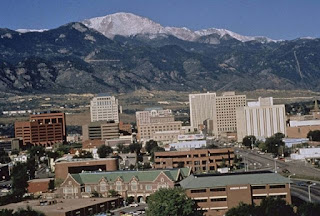Are Foreclosures Spreading to Your Neighborhood?
 First, there were the foreclosures caused by sub-prime loans. Then, there were the foreclosures credited to the exotic Alt-A loans. Many of these loans were written in the states that had the highest increase in real estate values – California, Nevada, Arizona and Florida. Because the majority of these loans were taken in these states, the largest numbers of foreclosures have been confined there.
First, there were the foreclosures caused by sub-prime loans. Then, there were the foreclosures credited to the exotic Alt-A loans. Many of these loans were written in the states that had the highest increase in real estate values – California, Nevada, Arizona and Florida. Because the majority of these loans were taken in these states, the largest numbers of foreclosures have been confined there.At least up to now. Foreclosures are no longer tied just to the type of loan taken. Today, the economy has devastated the financial stability of many families in every state in the U.S. causing foreclosures to spread to every corner of the country.
NPR reported on this issue recently:
Mark Zandi, chief economist with Moody’s Analytics, agreed that the foreclosure crisis was moving into a new phase.
House flippers, subprime borrowers and those who lost their jobs early in the recession have largely worked through the system, Zandi said.
“Now what you’re seeing is more strategic defaulting — more recently unemployed people who have exhausted their savings, sold assets and even borrowed money from relatives to keep paying the mortgage,” he said. “There’s nothing left for them to do.
“Everyone is being touched by this now,” Zandi told NPR.
In a recent report, RealtyTrac backed up Zandi’s thinking:
“The underlying problems that are causing homeowners to miss their mortgage payments — high unemployment, underemployment, toxic loans and negative equity — are continuing to plague most local housing markets,” said James J. Saccacio, chief executive officer of RealtyTrac. “And these historically high foreclosure rates will continue until those problems are resolved.”
In another report, RealtyTrac’s Saccacio explained:
“Bank repossessions, or REOs, jumped 21 percent from the second quarter to the third quarter, corresponding to jumps in defaults and scheduled auctions in the previous two quarters. REO activity increased from the previous quarter in all but two states and the District of Columbia, indicating that lenders may be starting to work through some of the pent-up foreclosure inventory caused by legislative delays, loan modification efforts and high volumes of distressed properties.”
Real Trends properly warned the real estate community in a recent article:
Those states hit the hardest and the earliest (California, Arizona, Nevada and Florida) are seeing some leveling off in the increase in foreclosure activity. Other states, perhaps over confident in their belief that they would not be hit, are now seeing huge increases in foreclosure activity.
Bottom Line
Distressed properties are no longer confined to a few states. The economy has put strain on many families across the country, in every region, every state, almost every county and many neighborhoods.
For More Information on the Colorado Springs housing market, contact Mike MacGuire today....your Colorado Springs Real Estate Expert!




Comments